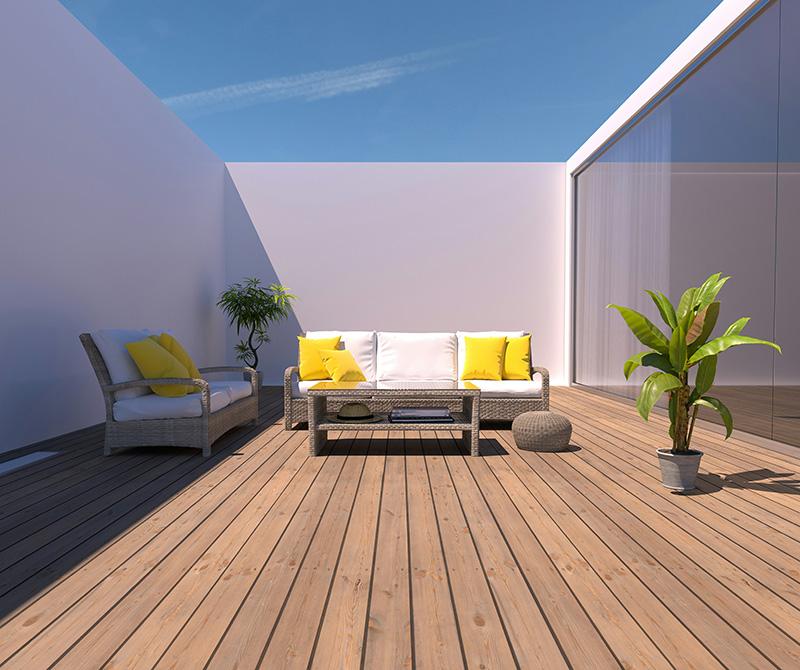
Designing Low-Maintenance Decks
- Smart material and layout choices can dramatically reduce long-term deck upkeep
- Proper drainage, framing, and fastener selection are just as important as your decking board
- Adobe Lumber stocks composite, natural wood, hardware, railing, and drainage solutions to support low-maintenance designs
Material Choice Matters
When customers visit our massive Northern California showroom, they often ask: “Which decking system will save me time and hassle down the road?” At Adobe Lumber, we’ve seen the evolution from traditional wood decks to composite and hybrid systems that prioritize longevity and minimal maintenance. First, material choice matters—but it’s only one piece of the puzzle. The right composite decking (Azek, Trex, Fiberon, etc.) resists splintering, checking, and rot under weather stress. Adobe Lumber carries industry-leading composite lines. But if you prefer natural wood for aesthetics, select species like iPE or redwood with proper sealing. Either way, coupling higher-quality decking boards with solid framing, stainless or coated fasteners, and hidden-fastener systems ensures fewer problems later.
Second, drainage and sub-structure design are key to reducing maintenance. A well-sloped deck surface (¼" per foot) and proper spacing between boards promote water runoff and prevent ponding. Under-deck drainage systems or secondary membranes help protect joists and ledger boards. Adobe Lumber carries pergola accessories, railing systems, drainage profiles, and hardware to support integrated drainage designs. Avoiding trapped moisture extends lifespan and minimizes cleaning, staining, or repair tasks.
Smart Layout and Orientation
Third, smart layout and orientation help reduce wear. Plan board runs perpendicular to foot traffic and align joints away from high-use zones to minimize stress points. Leave expansion gaps and avoid tight spacing that can trap debris. In high sun, use overhangs or partial shade structures (like pergolas) to reduce UV exposure on boards and connectors. In all of these decisions, our sales staff at Adobe Lumber can help you visualize your layout and supply the complementary products: edging, trim, fascia, railing, pergola beams, and more.
Finally, maintenance planning built into design is the unsung hero. Choosing materials that require only an annual rinse instead of sanding or restaining saves countless hours. Using hardware and fasteners rated for coastal or weather exposure avoids corrosion jobs later. And having a single trusted supplier (like Adobe Lumber) means you can source matching parts or replacement boards easily as projects evolve or repairs become necessary. We’re excited to help you build a deck that’s not just beautiful now—but easier to live with over many seasons. Visit our showroom or contact our team to walk through low-maintenance design options, get same-day quotes, and specify the right products for your project.
Frequently Asked Questions
Q1: Does composite decking eliminate all maintenance?
No—while composite greatly reduces tasks like sanding or sealing, you’ll still need to clean debris and occasionally power wash. But a good design makes that easy.
Q2: What drainage system do you recommend under composite decks?
We often recommend under-deck drainage channels or membranes, combined with sufficient slope and spacing. Our staff can help specify for your build.
Q3: Can natural wood decks be designed for lower maintenance?
Yes—by selecting stable species (e.g. iPE, redwood),using coated fasteners, sealing early, and ensuring drainage and airflow you can reduce the upkeep burden significantly.
Ready to plan your deck? Call our expert staff.



